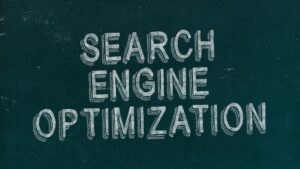This website uses cookies to improve your experience. We'll assume you're ok with this, but you can opt-out if you wish. Read More
SEO: What is it and Why is it so Important?

SEO stands for Search Engine Optimization. You are basically trying to optimize your content as best as possible through various strategies, with the aim of ranking higher in the search engines. Of course, you would prefer to be on the first page of Google when you launch your website, for example, in order to be found better and perhaps to offer your product or service. But what many often forget or don’t know is that all your content can be found through search engines. This includes all your posts that you post on your socials.
Google is, of course, the most well-known search engine that people use. In addition, there are also other search engines, such as Bing and Yahoo. All search engines have the same basic objective: to deliver the most relevant search results. But they do use different algorithms and factors to determine that ranking. This does not automatically mean that you will rank number one on Google, Bing and Yahoo.
Now that you know what it is, you probably want to know what it can do for you. I will mention them in the benefits. Then I’ll also tell you what the disadvantages of SEO can be, because every advantage has its disadvantage (Spoiler: it’s not very serious). And then I will also give you some strategies to be able to apply SEO to the content you want to post.
Benefits of Using SEO
SEO has several benefits for your content. Here are some of them:

More (Free) Website Traffic
SEO can drive more traffic to your website. A higher position on Google automatically leads to more traffic. People don’t want to have to scroll far and certainly don’t want to go to the next pages.
Because you rank in a higher position, more traffic will come to your website. This is all organic. There are no ads involved to send people to your website. So you get that traffic for free instead of having to pay for it, like with ads.
Increased Credibility
People trust websites that rank higher, also tend to trust lower-ranked websites. So it makes people feel trustworthy when you rank high in the search engines.
Long-lasting Results
When you do SEO right, you will continue to rank high for a long time. Think months, maybe even years. You keep attracting people during that time. What you do afterwards, with the people you attract, is of course up to you, but you can also continue to earn money from this over and over again.
Disadvantages of using SEO
As mentioned earlier, every advantage also has a disadvantage. And that also applies to SEO. The disadvantages have nothing to do with what SEO can do for your business, nothing to do with the benefits. Rather, it has to do with wanting to apply SEO.
It takes Time
 It takes time for two different reasons. It may take a long time before you have a text ready to go, fully optimized, but not too long-winded and still appropriate to your style. This can happen in the beginning when you don’t have the knowledge to apply it yet. But SEO also takes time because it’s not something that delivers immediate results. For example, if you start optimizing your website now, you won’t have more visitors tomorrow. You probably won’t have that for a few months. It is a process that takes a long time and often requires adjustments later on.
It takes time for two different reasons. It may take a long time before you have a text ready to go, fully optimized, but not too long-winded and still appropriate to your style. This can happen in the beginning when you don’t have the knowledge to apply it yet. But SEO also takes time because it’s not something that delivers immediate results. For example, if you start optimizing your website now, you won’t have more visitors tomorrow. You probably won’t have that for a few months. It is a process that takes a long time and often requires adjustments later on.
Complexity
SEO is not something you do “quickly”. You need knowledge for it. There are several factors to consider to make everything as SEO-friendly as possible. You can read more about these factors in the strategies. And as mentioned earlier, SEO also requires adjustments, which can sometimes be complex for someone.
Competition
Just as you like to rank at the top of Google, just about everyone else wants to do the same. So there’s a lot of competition, especially in popular markets. As such, it can be difficult to stand out among the competition that is also working on SEO.
Strategies
There are several strategies for applying SEO. I have listed them here as simply and clearly as possible in order to avoid confusion.
Keyword Research

In other words, keyword research. I think keyword research is the most well-known SEO strategy known. It’s all about the keywords. You incorporate specific keywords that people are looking for into your content. However, these can also be phrases that you incorporate into your content. Think of your posts on social media, your website, your blog, your product descriptions of your webshop, services you offer on a platform, etc. This way, your content will be found faster than others who do not include specific keywords in their content.
To find relevant keywords, it is important that you do your research. Research your target audience, industry, products, services, and topics. These are general terms and specific terms. Let’s say you offer a service on your website. Then it is important, for example, that you name the service, explain the service, the location can be important if it is a physical service. When you do this, you can present yourself as an authority on that service, but you can also use different search terms.
Then name your keywords strategically in different places, for example on your website. Use it in the title, the headings, in the text or explanation itself, of course, but also in the meta description. Many people often forget the meta description. The meta description provides a brief description of the content of a page on a website. And this description is displayed below the website title when you appear in the search results of a search engine, such as Google. The meta description doesn’t directly affect your ranking on Google, but it does indirectly, because it can affect the click-through rate by allowing people to see what that page is about.
 When you place the keywords strategically, the idea is that you do not use the same words over and over again, but alternate them with relevant keywords. For example, for the word keyword, these would be: keyword, keyword and competitive search term.
When you place the keywords strategically, the idea is that you do not use the same words over and over again, but alternate them with relevant keywords. For example, for the word keyword, these would be: keyword, keyword and competitive search term.
Content
The content of your content is very important. You can’t just throw keywords at the bottom of your text to hopefully find them. No, that doesn’t work for Google. It’s important that your content also contains valuable content. For a website, it is useful that the content is valuable, that it interests the target group and that it meets their needs. As a result, they also attract more website visitors.
The goal is to fill your website with information that is useful and informative, but also attractive and engaging. Valuable content can range from blog articles and guides to videos and podcasts.
Backlinks
You probably know it: you press a word that is blue and underlined. There is a link to this. As a result, you will often be taken to another page. In other words: you link something.
 Backlinking is basically the same. The only difference is that through backlinking, external parties link to your content, such as your website. Let’s say you have an upcoming blog. You then ask a fellow blogger to name your blog article and place a link, for example. Other people link to your content through backlinks. And when other websites link to your websites, Google sees that as an indication that your website offers valuable content on a topic. This can ensure that you get more traffic to your website and therefore a higher ranking on the search pages.
Backlinking is basically the same. The only difference is that through backlinking, external parties link to your content, such as your website. Let’s say you have an upcoming blog. You then ask a fellow blogger to name your blog article and place a link, for example. Other people link to your content through backlinks. And when other websites link to your websites, Google sees that as an indication that your website offers valuable content on a topic. This can ensure that you get more traffic to your website and therefore a higher ranking on the search pages.
Analysis
In addition to all the necessary things you have done to provide your content with SEO in the best possible way, it is also important to view and monitor the results. You want to be able to see if what you’ve done is well received by your target audience. You want to see if your keywords are catching on, how the backlinks are doing, and if your content is catching on.

Analysis is done by using analysis tools, such as Google Analytics and Google Search Console. This allows you to gain insight into the performance on your website. Both, by the way, are free tools. Google Analytics provides information about how people arrive at your website, user behavior, conversions, and more. Google Search Console gives you insight into how your website appears in search results, including clicks, impressions, and average positions.
Another form of analysis you can do is A/B testing, also known as split testing. Sounds complicated, but it’s pretty simple. You have a website with several pages. You can create two versions of a single page, such as the page where your services can be found. Through the A/B tests, some of your visitors are directed to one page and another part to another. Changes can be related to your title, design, and content. This way you can analyze which one does better of the two. You can then make adjustments, which can be either large or small. In the case of major changes, it is often easier to measure whether your changes are successful or not. Then, if you want, you can also do a split test on the better-performing page to optimize it even more.
Recap
SEO, Search Engine Optimization is therefore essential to be found better online. In this article, you have found out the pros and cons of SEO. And there are a lot of strategies to be able to apply SEO to your own content. If you want someone to help you with your SEO, from keyword research to analytics, please contact us via info@luminarywords.com or schedule your appointment via: https://calendly.com/luminarywords/

